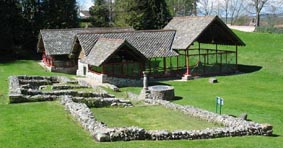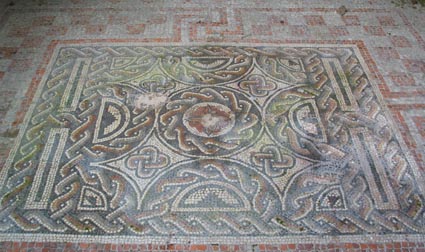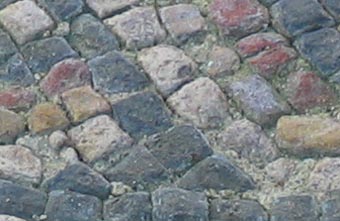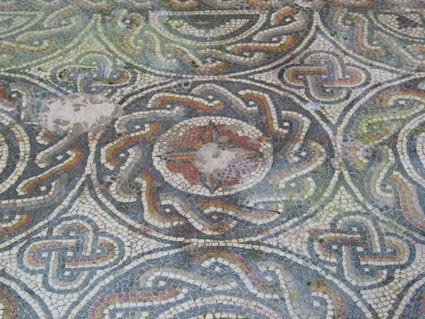Roman town house in Dorchester
 |
The Roman town house at Colliton Park in Dorchester, Dorset, is an excavation of an entire house, showing the layout of the buildings and other features such as the well. The rooms containing mosaics are covered by a glass-walled structure. The largest intact area of mosaic is in the part of the house nearest to the uncovered walls. |
| The mosaic is decorative one. The square area is divided up in a standard format, with a circle (roundel) in the middle, semicircular areas on each side and quarter circles (quadrants) in each corner. This would be easy to mark out using a pair of compasses. These shapes are defined by double strands of guilloche (twisted rope effect). The remaining spaces contain four knots made of two interlocked loops. The border is much plainer, with a red and white chequerboard effect and swastika patterns. |  |
|
|
More detail of the centre of the panel. Below is a picture of one of the knots, and details of the tesserae used in a section of guilloche elsewhere in the villa. Dorchester was known to the Romans as "Durnovaria" and was a local centre for mosaic making. Three large pavements and other mosaics can be seen in the town's museum. |

back to list Click for a list of other Roman mosaics you can see on this site |
 |
the joy of shards Mosaics Resource
